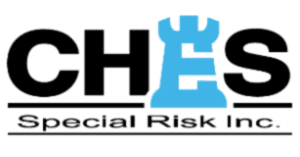What Are Protective Safeguard Endorsements? What Happens If the Schedule Is Blank?

Melissa Wray and James Willis
Protective Safeguard Endorsements in property insurance policies are specific provisions that require the policyholder to maintain certain safety measures as a condition for insurance coverage. These safeguards are typically fire or theft prevention systems like sprinkler systems, burglar alarms, locks, fire alarms, or security personnel. The endorsement is essentially a promise from the policyholder to keep these systems in working order.
These endorsements are designed to reduce the risk of damage to the insured property. By ensuring that protective measures are in place and functional, the likelihood of severe losses from events like fires or burglaries is minimized. Maintaining these safeguards can often lead to lower insurance premiums, as they reduce the risk the insurer has to bear. Failure to have or even maintain these safeguards can lead to significant consequences. If a loss occurs and it’s discovered that the safeguard was not in place or operational, the insurer may deny the claim. Most policies require that the safeguard be in operation at all times but may provide an exception when the insurer has been notified of the impairment.
If a loss occurs and the policy requires a protective safeguard, the claims adjuster will normally investigate to ensure the protective safeguards were operational. An article by CoreMark, Protective Safeguards Endorsement: How to Avoid Having Your Business Property Damage Claim Denied, warns about what may happen if the safeguard is not operational:
Whether you own and insure your office or other business property, or insure the office or building you rent, you will obviously want to make sure that you have an automatic sprinkler system or some other fire detection or suppression system in place in case of fire.
You’ll also want to make sure that your fire alarms are working and that you have service contracts for periodic inspections of your facilities to identify fire and other risks. But what happens if there’s a fire in your building and your sprinkler system fails? Well, when you make your insurance claim you could be in for a nasty surprise if your policy has a ‘protective safeguards endorsement.’
This endorsement would deny coverage if you had failed to maintain and ensure that your system is in proper working order. If your policy contains a protective safeguards endorsement, and you fail to adequately maintain any of the protective safeguards at your commercial building or manufacturing facilities and you suffer a loss caused by fire, coverage for the fire loss can be denied by your insurance company.
Also, if you knowingly turn off or suspend any of the safeguards, even if it is for routine maintenance, and fail to notify the insurance company of the suspension, and a loss occurs during the suspension, coverage can be denied.
Because of the potential coverage gaps that can be created by this endorsement, it’s very important for you to know whether it’s attached to your policy – and if it can be removed. If it can’t be removed, you need to understand your responsibilities in order to avoid having your claim rejected.
The typical protective safeguard endorsement refers to a schedule of what type of protective safeguards are required. What happens if the schedule is blank? A recent decision involved this situation.1 After the trial court ruled in favor of the insurance company, the policyholder made the following argument in their appellate brief about why the trial court was wrong:
First, it was erroneous because the PSE – whose Schedule is completely blank and neither reflects nor incorporates any requirements set forth elsewhere in the Policy – does not mandate any protective safeguards whatsoever. Second, it was erroneous because the PSE is ambiguous in several respects and must therefore be construed in favor of coverage. At most, all that was required was a local alarm, and the summary judgment evidence demonstrates a fact issue with regard to whether The Pointe had one in place at the time of the loss.
The insurer argued that the schedule was not blank because the Protective Safeguard Endorsement Schedule referred to another schedule that identified the required safeguards.
The appellate court disagreed with the trial court’s decision and found for the policyholder. I think that it should be noted that the appellate court noted that when dealing with insurance contracts:
The policy of strict construction against the insurer is especially strong when the court is dealing with exceptions and words of limitation.” Am. Nat’l Gen. Ins. Co. v. Ryan, 274 F.3d 319, 323 (5th Cir. 2001) (quoting Blaylock v. Am. Guar. Bank Liab. Ins. Co., 632 S.W.2d 719, 721 (Tex. 1982)).
The appellate court then stated:
An insurance policy, like a contract, should be read as a whole. A review of The Pointe’s Policy as a whole reveals that at least some protective safeguards were required. At the bottom of the table, the PSE states, ‘[i]nformation required to complete this Schedule, if not shown above, will be shown in the Declarations or the Commercial Property Insurance Schedule.’ Then, the CPI Schedule requires the property to have P–2 and P–9 as protective safeguards. Given that the PSE directs the reader to the CPI Schedule, it is unreasonable for an insured—charged with knowing and understanding the terms of its policy—to fail to flip to that second document to see if anything is required. Further, the language at the bottom of the table (“if not shown above”) anticipates the table not being completed. And if protective safeguards were not required simply because the table in the PSE was not filled out, then the CPI Schedule would be made meaningless. The Pointe’s interpretation thus goes against the fundamental rule of contract construction, which mandates that no policy language be rendered superfluous. Looking at the Policy as a whole ‘in light of the circumstances present when the contract was entered,’ the empty table in the PSE does not establish that no safeguards are required. See id. Additionally, because this construction of the PSE is not reasonable, the Policy is not ambiguous on this basis.
The bottom line is that the appellate court found that the policyholder must go to the other schedule. Just because one schedule was blank was not enough to show ambiguity.
The winning argument for the policyholder was that the description in the other schedule created an ambiguity about what was required:
As to The Pointe’s construction, it was reasonable for The Pointe to consult the CPI Schedule to determine its responsibilities under the Policy. Underwriters themselves agree, earlier contending that it would have been unreasonable for The Pointe not to look to the CPI Schedule to find the Policy’s requirements, given the empty PSE table. The CPI Schedule requires The Pointe to maintain ‘P2 – Fire Alarm: Local.’ We give contract terms their plain, ordinary meaning… ‘Local’ means “having a definite spatial form or location” or ‘of, relating to, or characteristic of a particular place: not general or widespread.’ Local, Merriam–Webster Online Dictionary, http://www.merriam-webster.com/dictionary/local (last visited Nov. 15, 2023). We therefore interpret the plain language of ‘Fire Alarm: Local’ as requiring an alarm that sounded in the particular place that it alerted. This is a reasonable construction of the CPI Schedule’s language and the Policy’s overall requirements.
…
Because the Policy is ‘reasonably susceptible of more than one meaning,’ depending on whether the PSE or the CPI is given more weight, we conclude that it is ambiguous…. And because we must adopt ‘the construction that favors the insured,’ the district court’s grant of summary judgment was in error.
Protective Safeguard Endorsements are a critical part of property insurance policies aimed at minimizing risks through mandatory safety measures. For policyholders, especially in commercial settings, understanding and adhering to these endorsements is essential to ensure coverage in the event of a loss. To avoid a legal mess and denial of a claim, policyholders and those managing commercial property for policyholders must first place the required equipment into operation. Then, the protective measures must be maintained and regularly inspected to ensure they are operational. Inspection and testing is often the only way to ensure that coverage is not unknowingly being jeopardized.
A shout-out goes to James Willis and Melissa Wray for their excellent brief and advocacy for the policyholder.
Thought For The Day
Only the paranoid survive.
Andrew Grove
___________
1 The Pointe Dallas v. Underwriters at Lloyd’s London, No. 22-11213 (5th Cir. Jan. 11, 2024).




